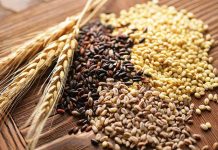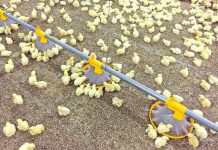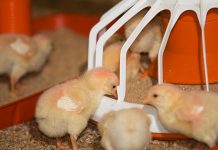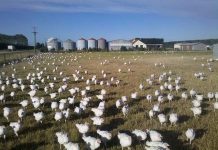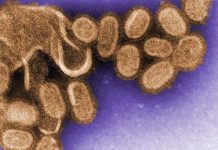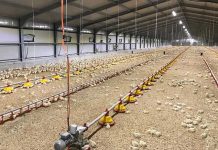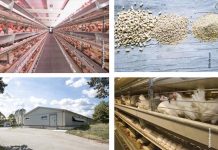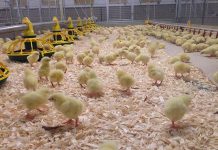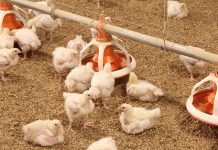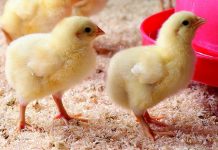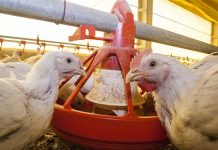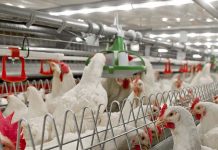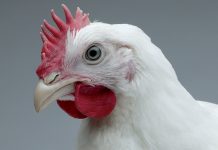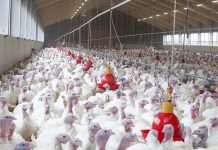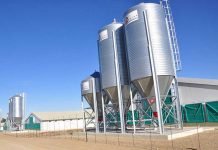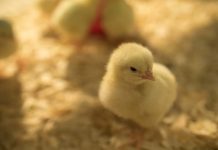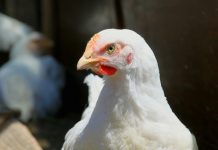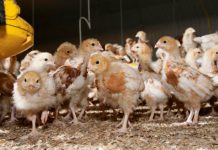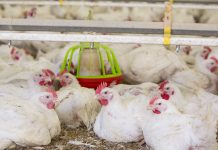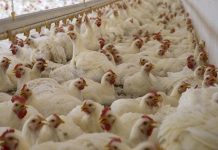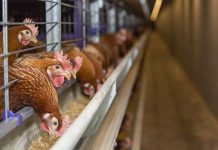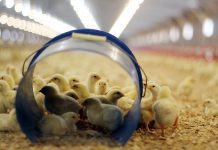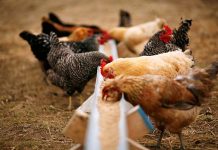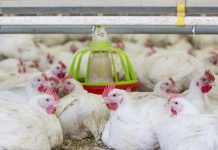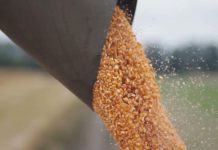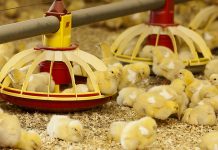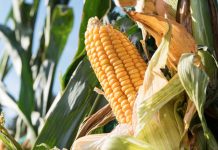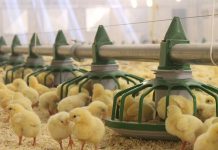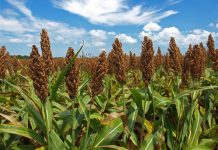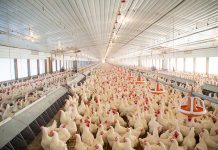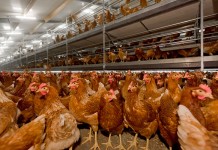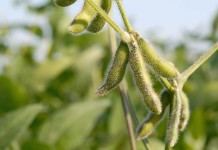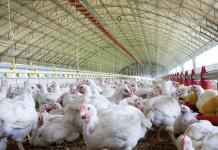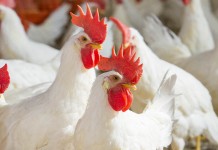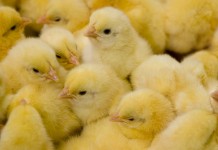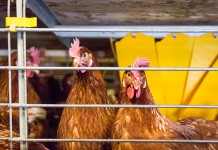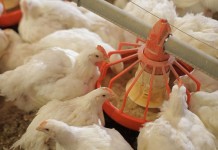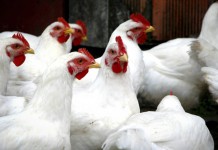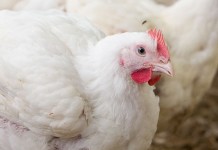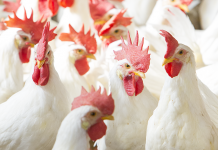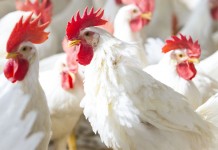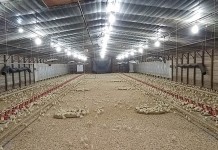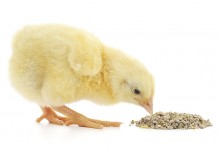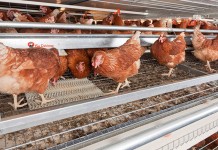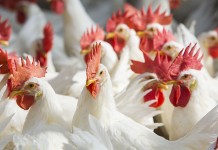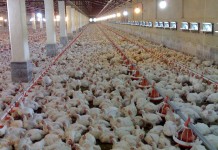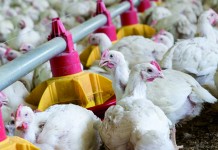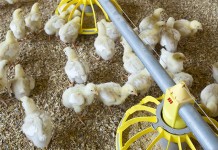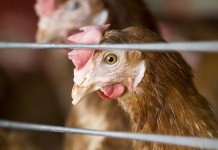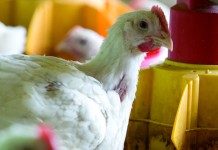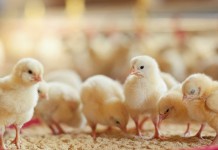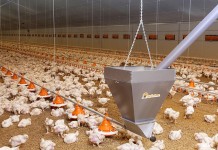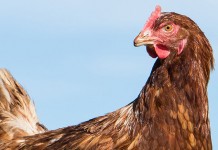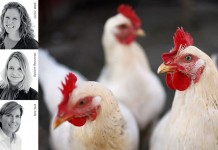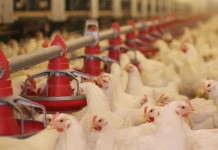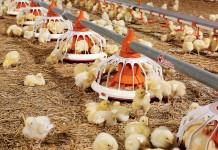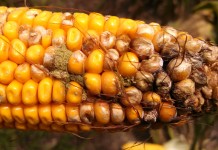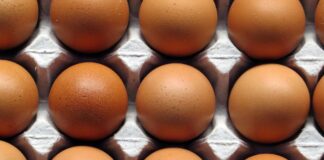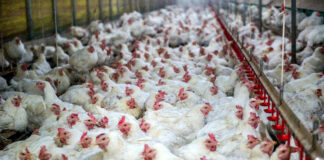Impact of grain type on performance in broilers under Necrotic Enteritis challenge
The aim of this study was to investigate the effect of grain type on performance and gut microbiota composition in broiler chickens under a...
Low protein diets in broilers
Some recent research at the Arkansas Agriculture Experiment Station Poultry Research Farm has been focused on low protein diets in broilers. Many nutritionists rely...
Challenges in poultry feeding
Poultry producers around the world continue to struggle with high production costs for poultry feeding, largely due to volatility in prices for basic feed...
How to improve hen fertility
Following specific procedures to increase hen fertility will not eliminate drops in fertility, but it may also reduce the need to trouble-shoot breeder flocks.
Artificial...
H7N9 flu mutation identified that allows immune system escape
The research, published in the Journal of Virology, demonstrated that small genetic differences in the virus surface proteins can prevent antibodies that protect against...
Pellet quality and its effects on poultry performance
Pellet quality provided to meat birds throughout the industry is highly variable. Feeding birds pellets of poor quality can in part be attributed to...
Expanding feed milling capacity and quality at New Rosendale’s
At a time when the North American feed industry is undergoing a dramatic transformation driven by new rules, heightened market expectations and ground-breaking technology...
Keel bone integrity in layers – Observations, nutritional remedies, and myth-busting
The issue of keel bone deformities and abnormalities is different depending on various housing systems for the birds. Keel fractures have received a lot...
Effects of dietary insoluble and soluble non-starch polysaccharides on performance and ileal and excreta...
This study examined the effect of dietary insoluble and soluble non-starch polysaccharides (NSP) in common broiler diets on performance and ileal and excreta moisture...
Corn co-products in broilers
The expansion of the ethanol industry has increased the availability of a variety of corn co-products as feedstuffs for livestock and poultry. Of the...
NRGene to offer the first broad soy diversity & haplotype database
All-by-all full genome comparison of 30+ varieties to rapidly improve nutrition and hardiness and reduce resource requirements
NRGene, the leading genomic big data company, has...
Taking phytase superdosing from scientific concept to commercial application: a UK example
Scientific research is based on carefully designed experiments, performed in carefully controlled conditions with the outcome measured as accurately as possible, using a range...
The selection element in whole grain feeding regimes
Seven dietary treatments consisting of a ground grain control and six treatments with pre- and post-pellet whole grain inclusions of 7.5, 15.0 and 30.0%...
Dietary energy, digestible lysine and available phosphorus levels influence growth performance and carcass traits...
Energy (E) and amino acids (AA) are two of the most expensive components in broiler diets. There is no general consensus regarding the interaction...
Precision feeding of broiler breeders
Precision livestock feeding relies on real-time sensor feedback from individual birds to decide whether or not to allocate feed, according to the needs of...
Ileal amino acids digestibility in response to increasing phytase dose or MCP levels in...
Commercial broiler feed is formulated mainly with plant based ingredients including cereals and oil seeds. These ingredients provide low available P because 70-80% of...
The value of digestibility coefficients and protein
At all times and for all human cultures animal protein took an important part of nutrient supply and has been always of a high...
Why do we need low protein meat chicken diets?
The current level of protein used in meat chicken diets is linked to various issues observed in the industry including feed cost and feed...
A new perspective on feeding broiler breeders
Due to sophisticated genetic selection programs carried out by poultry breeding companies such as Aviagen, today’s broilers can grow with very efficient feed conversion...
Site and extent of digestion on poultry production
In poultry formulation and production of feed has evolved extensively in the last century with the identification of required nutrients, and subsequent and continuing...
Evaluation of anti-inflammatory capacities of bacillus-based probiotics using an in vitro intestinal cell model
With the evolution of genetic potential of modern broilers, transforming the large feed intake into protein deposition is a real challenge for the digestive...
Effect of two different fibre sources on growth and immune function in grower layer-pullets
This study was conducted to evaluate the effect of two different fibre sources on pullet growth, gut immune tissue, and lymphocyte proliferation of strain...
Effects of probiotic Bacillus amyloliquefaciens H57 on performance and intestinal microbiota of chickens
Probiotics (direct fed microbials) are a potential alternative to antibiotic growth promoters for improving animal production and preventing enteric pathogen infections. The Authors are...
The future of probiotics
USPOULTRY and the USPOULTRY Foundation announce the completion of a funded research project at the Western University of Health Sciences in Pomona, Calif., in...
Vitamin D in laying hens: how high is high enough?
In 2010, the Institute of Medicine in the United States reviewed current literature and changed the estimated average requirement of 400 IU/day to a...
Effectiveness of a double choice test to assess dietary taste preferences in broilers
Investigations into the taste system of broilers can help to improve poultry feeding strategies. However, a comprehensive study on dietary taste preferences for broilers...
A cost-effective solution to partially replace vitamin E
Oxidative imbalance can reduce animal productivity. If severe, it can lead to inflammation, reduced immune function and increased susceptibility to disease. Livestock producers typically...
The bioavailability of zinc in poultry: what does literature say?
Zinc bioavailability: zinc is an essential trace element for all the animals, including broilers. In case of deficiency, alteration of growth performance and distortion...
Intestinal barrier function – A case to be studied in reduced protein diets
Maintaining intestinal health and growth remains a concern as demands increase to limit the use of antibiotics in poultry production. There is also an...
Improving feeding efficiency with innovating products
At Trouw Nutrition they have focused their innovation in the poultry business on finding new ways of achieving improved feeding efficiency and enhanced performance...
A cost-effective poultry feed additives solution to partially replace vitamin E
Livestock producers typically use feed additives such as vitamin E to increase the antioxidant capacity of animals and minimise economic losses.
Recently, the price of...
Short chain fatty acids and poultry gut health
Due to customer demands, producers have been asked to change the way they grow production animals, specifically through the removal of antibiotics. With this...
Managing the risk makes the difference in mycotoxin control
A webinar on the results of the 2017 harvest analyses in terms of mycotoxin contamination has been recently held. Two experts on the matter...
Lowering dietary calcium and available phosphorus in broilers
The aim of this trial was to investigate the effect of lowering dietary calcium (Ca) and available phosphorus (av.P) during Starter (0 to 10d),...
Additivity of ileal amino acid values of sorghum with different protein sources
Sorghum is used widely in Australian poultry diets, primarily as an energy component. It is usually fed in diets that contain wheat but may...
The challenge of feeding modern broiler breeders
Broiler breeders are expected to produce about 150 chicks in 40 weeks of production and even though it is commonly believed that selection for...
Early introduction of whole-grain diets to broiler chickens
The main problem with introducing whole-grain diets (WGD) to newly hatched chicks is the kernel size and this has led to such diets being...
Using sunflower meal in broilers with the addition of a carbohydrase complex
Sunflower seeds are extensively grown for oil production for human consumption. Therefore, a great amount of sunflower meal becomes available for use in feed...
Dietary non-phytate phosphorus levels for laying hens in the last phase of lay
The phosphorus (P) requirement of laying hens is an area of on-going debate and it is a factor that contributes to hen performance and...
Replacing soy in broiler diets. Effect on performance, carcass yield and cost of production
The objective of the present study was to evaluate the effect of replacing soybean meal (SBM) in broiler diets on performance, carcass quality and...
Effectiveness of a double choice test to assess dietary taste preferences in broiler chickens
Investigations into the taste system of chickens can help to improve poultry feeding strategies. However, a comprehensive study on dietary taste preferences for broilers...
Modification of the chicken intestinal epithelial physical barrier in poultry by dietary factors
The intestinal epithelial physical barrier is the most critical element of maintaining an intact intestinal barrier and made up of a layer of columnar...
Comparison of wheat and maize-based diets on growth performance and meat quality of broiler...
Maize and wheat are a major source of energy in broiler diets. Generally, wheat-based diets are offered to broiler chickens in Europe, Australia and...
The effects of in-ovo feeding
In-ovo feeding is a key issue in poultry. The embryonic and immediate post hatch developmental period represents a significant phase in attaining quality broiler...
Challenges in longer laying cycle. Stabilizing egg quality
In the past 50 years, selection, initially at the breed level and then using quantitative genetics coupled with a sophisticated breeding pyramid, has resulted...
Field experience on the use of probiotics in chickens and turkeys
Probiotics have been used for several years in an attempt to improve intestinal health. Recently, microbial products have been extensively studied as supportive treatments...
On free amino acids – Their role in starch and protein digestive dynamics
The quantity of glucose and amino acids absorbed from the small intestine is a function of dietary concentrations, feed intakes and digestibility coefficients. Moreover,...
Immediate post-hatch nutritional restriction in broilers
The effect on broiler muscle development and occurence of intramuscular fat.
Neonatal nutrition and immediate post hatch nutritional restriction represent an important facet of broiler...
Probiotics as an alternative to antibiotics for treating lameness in broilers
The pathogenesis leading to a form of lameness known as bacterial chondronecrosis with osteomyelitis (BCO) appears to be initiated by mechanical microfracturing of susceptible...
High levels of cottonseed meal supplemented with composite microbial enzymes
Effects of cottonseed meal supplemented with composite microbial enzymes on broiler chickens.
Soybean meal (SBM) is the premier plant protein source used by the poultry...
Scientifically validated results to raise poultry production profitability
The Poultry Science Association 2017 Annual Meeting took place in Orlando, Florida on July 17-20. Being the most prestigious scientific event for poultry in...
Measurement of true ileal calcium digestibility of meat and bone meal for broiler chickens
Currently, there is a move towards the use of digestible phosphorus (P) in diet formulations for poultry due to P excretion into the environment...
How Xylanase can improve performance of a broiler diet
Whilst xylanase rich NSP-enzymes are used consistently in wheat based diets the question remains whether the positive response seen can be ascribed solely to...
Laying hen nutrition for optimizing egg production and quality
Hen nutrition is important; during the initial period of pullet rearing (<45 days of age), small particle size obtained by grinding of main cereals...
Evaluating phosphorous equivalency of phytases
The use of exogenous enzymes in non-ruminant nutrition is a valuable tool to increase digestibility and therefore spare the inclusion of expensive nutrients whilst...
Measurement of energy utilization in chickens
Although corn prices have dropped from historic highs in the past years, energy continues to be one of the driving costs in poultry feeding....
Using more bioavailable sources of trace minerals pays off
A study of broiler breeder performance was conducted using three separate minerals programmes. The objective was to determine if productivity could be maintained at...
Influence of feed form and particle size on the performance and nutrient utilisation of...
The present experiment was designed to examine the influence of feed form and particle size in maize-based diets on the performance and nutrient utilisation...
In vivo digestion of GM proteins in laying hens
Despite all of the positive effects of modern technologies to improve corn and soybean yields, the consumer often has a different perception of the...
Phosphorus: how low can we go in broiler diets?
Phosphorus (P) is essential for all forms of life. Dietary P content either in excess of, or below requirements may adversely affect broiler performance....
The effect of microbial challenge on the intestinal proteome of broilers
In broiler production intestinal health and function is paramount to achieving efficient feed utilisation and growth.
Uncovering the localised molecular mechanisms that occur during the...
Bacillus Subtilis improves performance of broilers fed medicated or non-medicated feed
Animal digestive health is key to obtain optimal performance. Antibiotic growth promoters (AGPs) have long been shown to be very effective to develop and...
Feather-eating hens show specific essential amino acid appetites in a double-choice model
Nutritional balance is one of the major considerations to prevent severe feather pecking in layer hens. Individual variation in digestive and metabolic efficiencies and...
New applications such as superdosing of phytase to maximize phytate destruction to improve performance...
It is well documented that phytase supplementation in broiler diets improves P and Ca utilization through the destruction of phytate (IP6) and thereby allows...
The relationship between feed particle size, gizzard development and broiler performance
Anatomy of the stomach
The stomach of the chicken consists of two chambers, the proventriculus or glandular stomach and the gizzard or muscular stomach.
The proventriculus...
Flexible Feed Formulation with GALLIPRO
Facing challenging goals
The goal of the poultry industry is to provide consumers with safe food, while promoting poultry health and welfare, in addition to carefully...
Feed borne mycotoxins: the threat to poultry?
Mycotoxins are metabolites produced by molds (fungi) that can infest crops pre-harvest and can continue to flourish under sub-optimal storage conditions. Grains with high...


